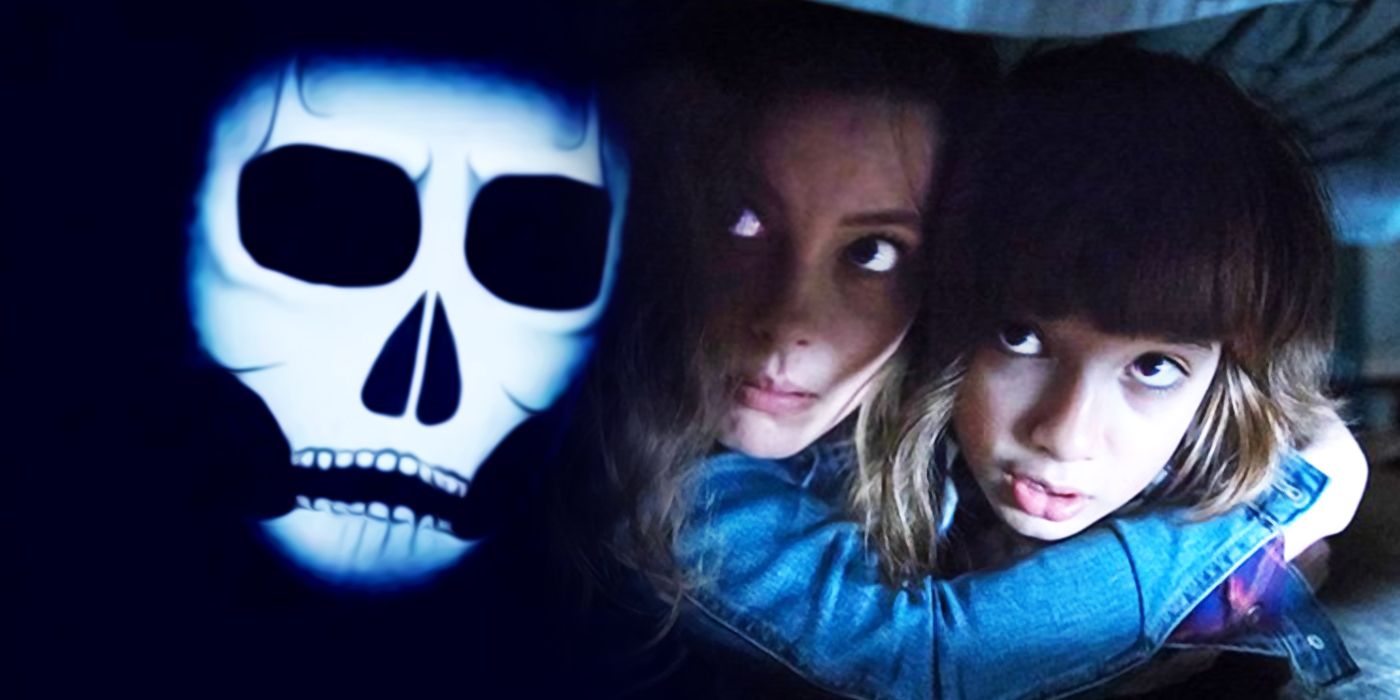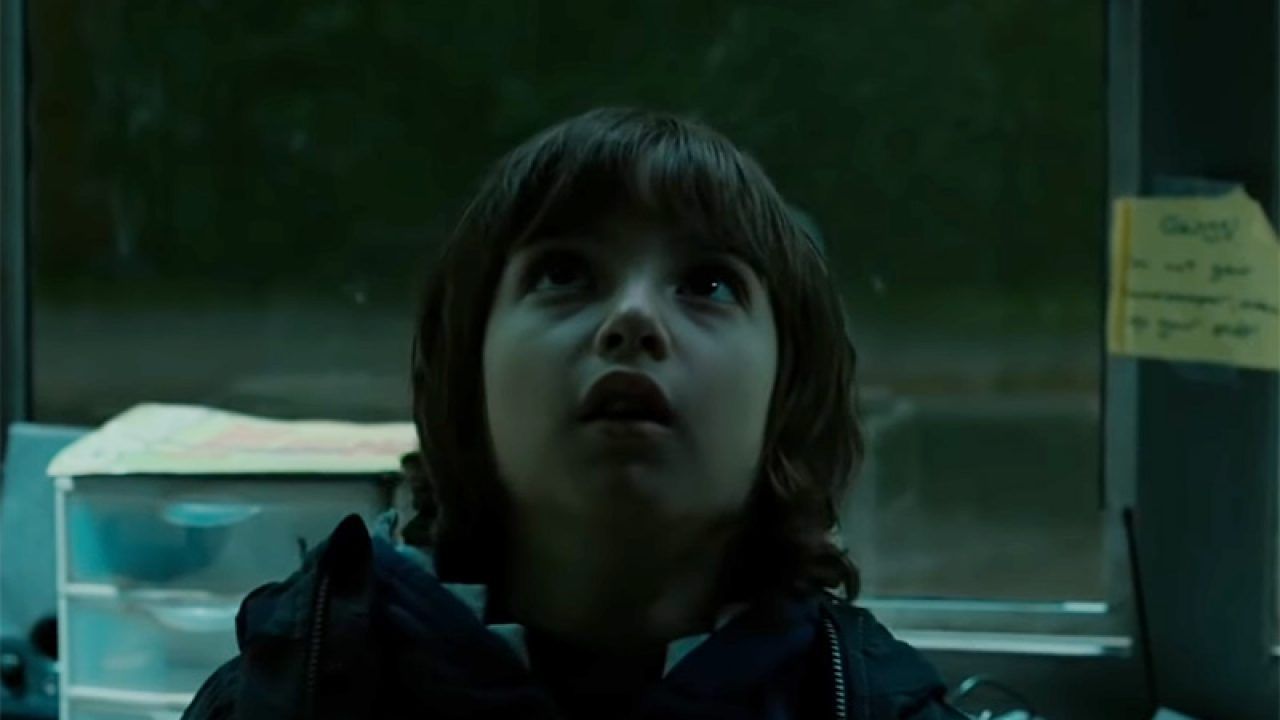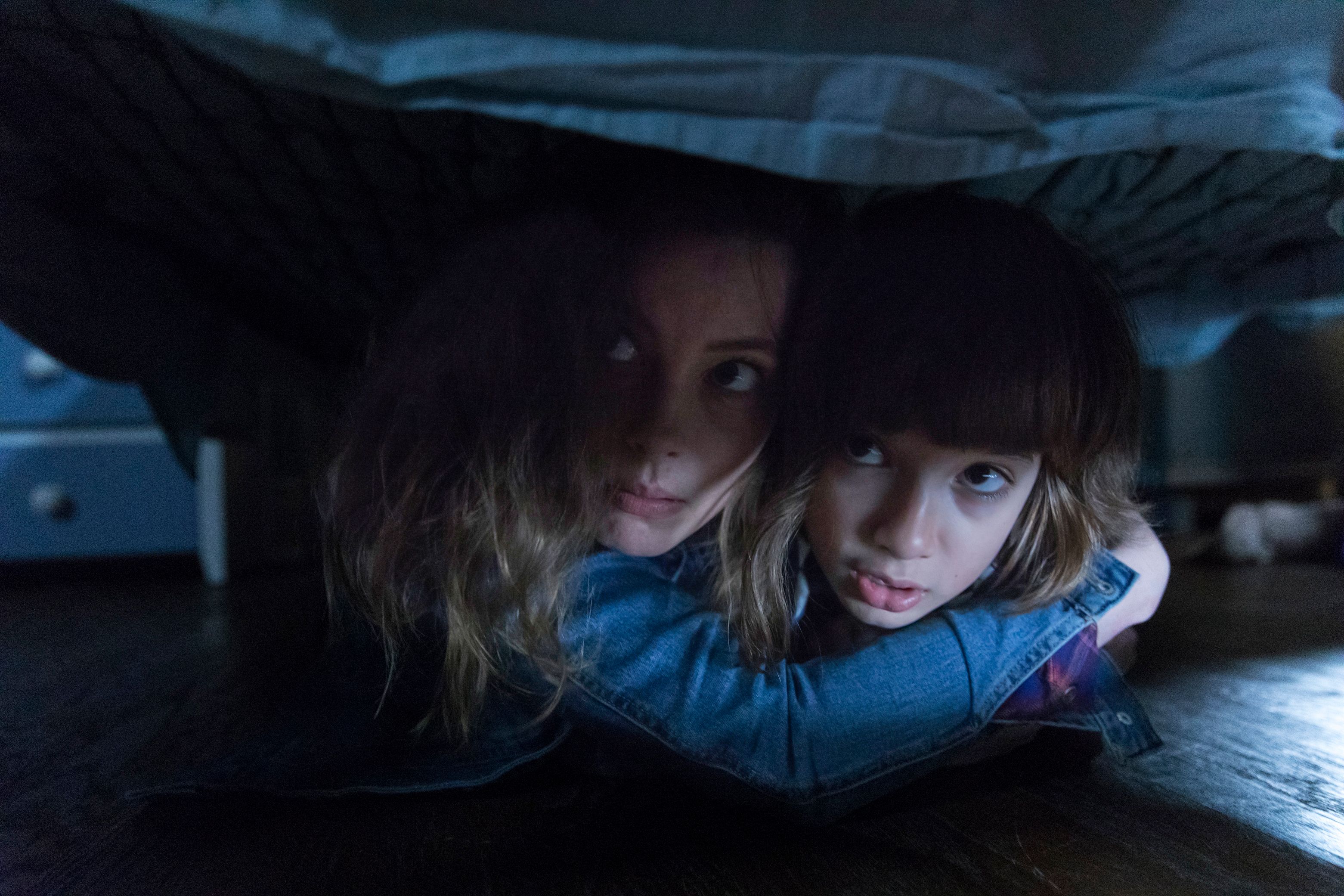Writer-director Jacob Chase’s Come Play makes a bumpy transition from five-minute short to full-length feature, adding some clunky, sentimental family drama to its basic initial horror concept. The great thing about a five-minute horror short is that it doesn’t require any exposition or narrative framework or even much dialogue. Chase’s 2017 short Larry features just a single line spoken by its lead actor, and it spends most of its brief running time building tension before a big burst of terror at the end. It’s efficient and effective, but nothing about it suggests that it ought to be nearly 20 times as long.
Come Play introduces a new main character, autistic 8-year-old Oliver (Azhy Robertson), a shy loner who hasn’t developed the ability to talk and interacts with the world primarily via his smartphone. He selects words on an app that speaks for him, and he spends most of his free time obsessively watching SpongeBob SquarePants. At school, although he has understanding teachers and an adult aide who sits with him in class, he’s still friendless and bullied, which makes him a prime target for the monster incongruously known as Larry.
Larry emerges from Oliver’s phone first in the form of a storybook-style app called Misunderstood Monsters, which appears suddenly and can’t be turned off until Oliver reads through its rhyming prose about the lonely monster who just wants to be his friend. But Larry is no Grover or Cookie Monster: He’s ominous and hulking, with a hunched-over stance and long, thin arms and fingers, and his idea of becoming Oliver’s friend is to abduct the young boy and bring him back to Larry’s realm, wherever that is.
Larry causes basic horror-movie havoc at first, and as in the original short, Chase comes up with some unsettling visual representations of dread, especially in the dialogue-free opening seven minutes, which could function as a self-contained short film of their own. As he enters into the world, Larry can only be seen via the camera on a phone or tablet, and he otherwise registers as an invisible presence, moving furniture and flickering lights, since he feeds on electricity.
Oliver first spots Larry thanks to a photo filter that pastes a skeleton over the monster’s unseen face, and later he registers Larry’s presence by using an infrared proximity sensor he grabs out of his dad’s toolbox. When Larry issues threats, he does so via technology, including one inventive scene in which he edits together TV clips to form his message.
Oliver’s dad Marty (John Gallagher Jr.) is Come Play’s version of the original short’s main character, a parking attendant terrorized by Larry as he sits in his booth. There’s a great, subtle moment with blowing papers forming the shape of Larry in the background as Marty faces the other way, oblivious to the danger to come. Of course, both Marty and Oliver’s mom Sarah (Gillian Jacobs) don’t believe in Larry at first, even after the monster appears to three other kids forced to have a sleepover with Oliver (they’re the same kids who’ve been bullying him at school). Come Play then follows a predictable horror-movie path, as the adults finally realize the true danger only when it’s right in front of them.
Sarah and Marty are struggling with other issues before Larry’s arrival, as their marriage is clearly coming apart and they’re at odds over how to best take care of Oliver. Jacobs, who’s still mostly known for comedy, puts in a valiant effort as insecure mom Sarah, and Gallagher brings the right amount of smugness to “cool” dad Marty, but the family drama is hokey and underdeveloped, and while Robertson has expressive eyes, he can’t quite get past his character’s inability to speak. This leaves Oliver always feeling like a symbol more than a person, just like Larry.
Oliver’s similarity to Larry is part of the point, and Chase even tries to build eventual understanding for the monster, tying its existence to the family’s emotional trauma, along the lines of The Babadook or Shudder original Z, which handled some of the same subject matter more deftly. The focus on the family dynamic eventually leads to a sappy climax that’s more about parent-child bonding than about scares (plus a cheesy message about overreliance on technology), and Larry never feels all that threatening, despite his roars and snarls. There’s no gore and very little violence in Come Play, which means that it relies entirely on creepy atmosphere, but Chase has trouble sustaining that tone for more than a few minutes at a time.
That wasn’t an issue in a short film, and Come Play often feels like it’s marking time to stretch out its feature-length narrative. Chase clearly has the skills for building tension and composing scary images, but he needs more than a short film with a flimsy premise to build on in order to properly put those skills to use.
Starring Azhy Robertson, Gillian Jacobs, John Gallagher Jr. and Winslow Fegley, Come Play opens Friday, Oct. 30 in theaters nationwide.



